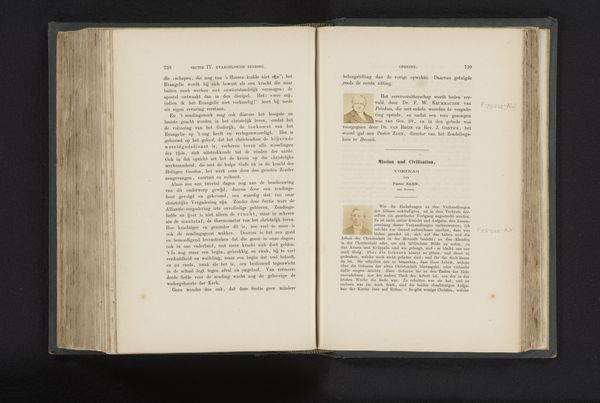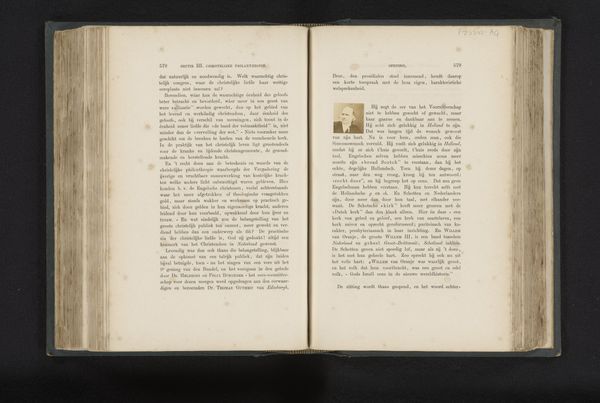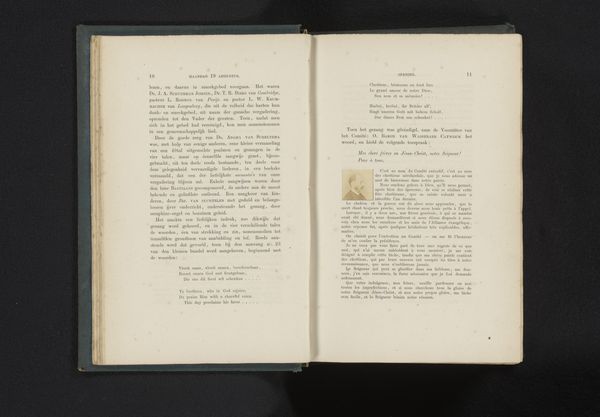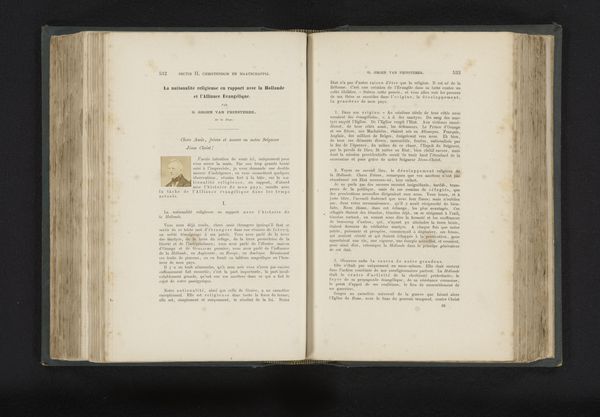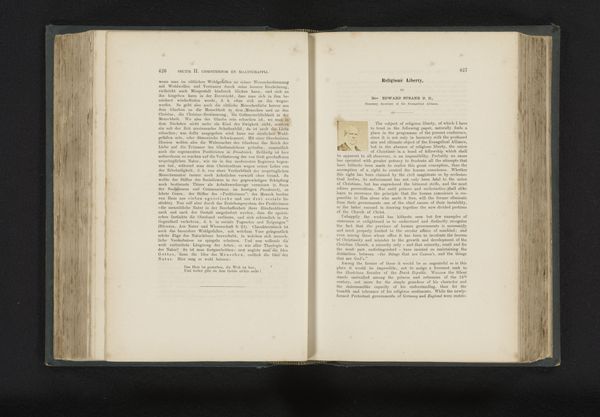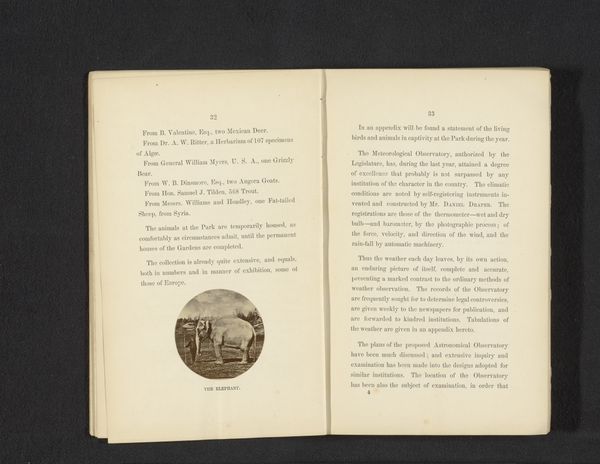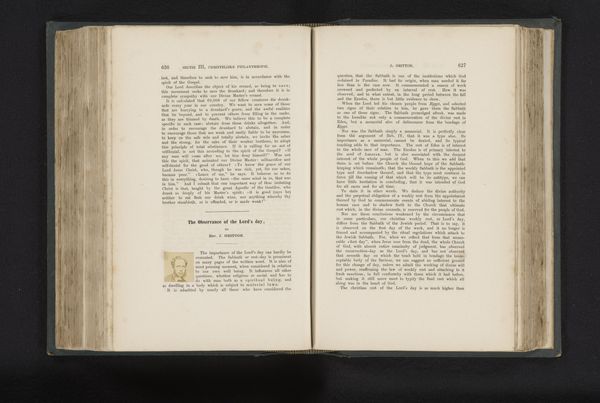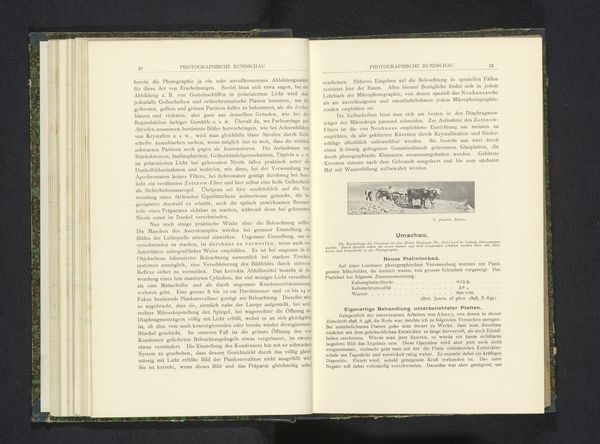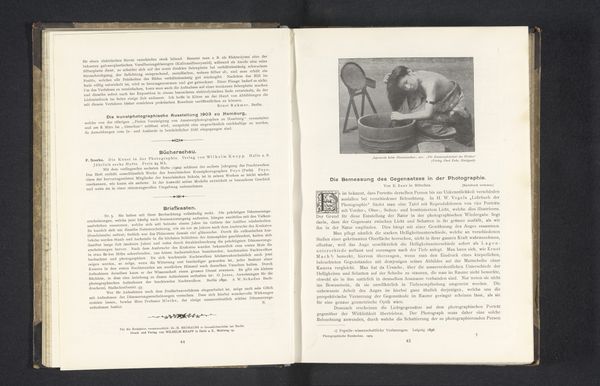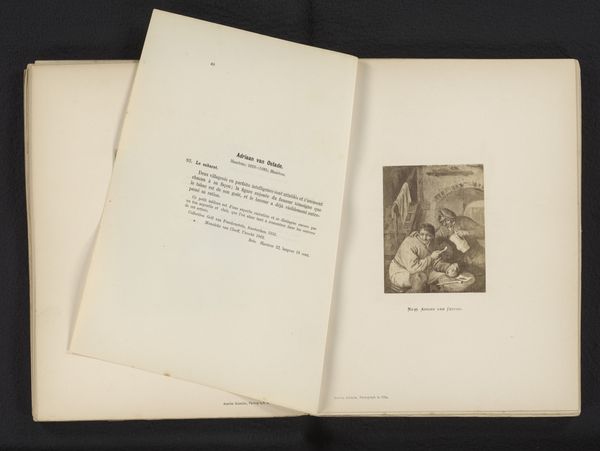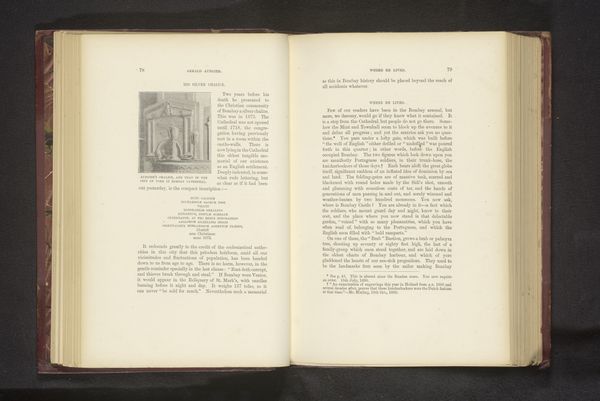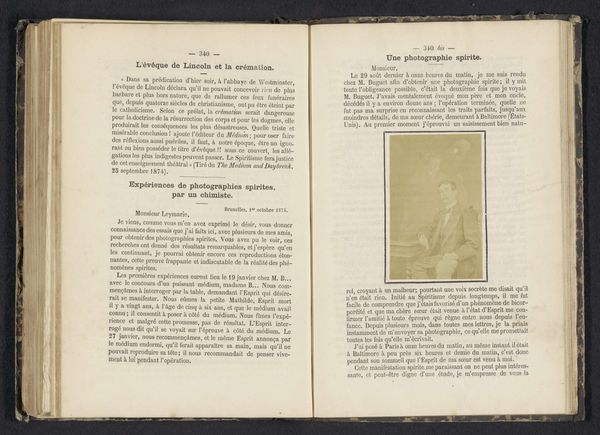
print, paper
#
paper
# print
#
paper
Dimensions: height 23 mm, width 23 mm
Copyright: Rijks Museum: Open Domain
This is a printed portrait of Eugène Casalis, appearing within the pages of a book. The image is the result of a photomechanical process: the original photograph would have been translated into a printing plate, perhaps using a halftone screen to create the illusion of continuous tones with tiny dots. Consider the relationship between this mode of production and the rise of mass media. Photography democratized portraiture, and the printing press allowed for wide dissemination of images and ideas. The paper itself bears witness to the industrial revolution, with wood pulp replacing the more expensive cotton or linen rags. It is fascinating to think about the ecosystem of labor that allowed this book to exist: from the photographers and printers, to the factory workers making paper and ink, to the binders who assembled the final product. The ease with which we can reproduce and distribute images today owes much to these earlier processes, which, in their own time, transformed society. The materials and processes are inseparable from the social context, so when considering an image like this, think of the collaborative effort involved, and its place within the larger network of production and consumption.
Comments
No comments
Be the first to comment and join the conversation on the ultimate creative platform.
